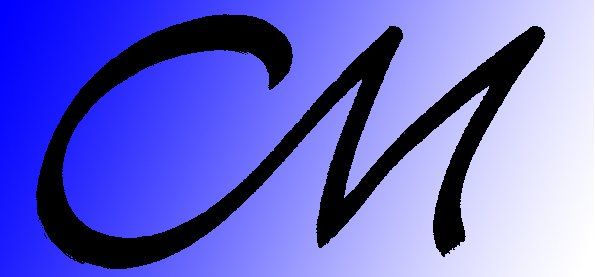Problem Solving
Problem Solving
We dedicate ourselves to your challenges with ease and seriousness and combine problem solving with creativity
We dedicate ourselves to your challenges with ease and seriousness and combine problem solving with creativity
As product cycles become more repetitive, it's more important than ever to have a problem solver on your side to help you breathe easy when things get bogged down. We can help you solve specific tasks in an interdisciplinary way and keep your other processes running - so you can continue to focus on your day-to-day business as usual.
Call us !
Creatives borrow ideas from one area of interest and apply them in another to solve problems.
Whether it's the person you've been with for decades, the job that's stressing you out, the life you're frustrated with, or the perplexing technical problem you've been tasked with solving.
In the world of business, science, or the arts, the act of seeing from an "oblique" perspective is a coveted commodity. Why? Because it's a rare skill. Divergent thinkers are adaptive thinkers. Innovative by nature. Creative solution providers from the start.
... Should I focus on the problem? Drawn in by the amount of information that needs to be understood, yet limited by tunnel vision? There is an answer: nature. The original source of creative insight.
The world around us is waiting to be seen. A natural resource for those willing to see ideas and fertilize man-made problems with nature's evolutionary solutions. Scientists call this biomimicry. It has changed the way problems are solved in engineering and science. "Biomimicry is an approach to innovation that seeks sustainable solutions to human challenges by mimicking nature's proven patterns and strategies." Nature's ideas are popping up in unusual places as the quest for elegant design and response to society's increasingly urgent need for speed, innovation and environmental protection escalates. Nature offers a wealth of ready-made solutions that we just need to distill. For me, nature offers the ultimate metaphor maker. Point to the proverbial olive branch to solve life's conundrums. It offers organic solutions to what we grapple with in our worldview. When we pause, search and observe, nature helps us connect the dots. But only if we discard the "quick look" and deepen observations to see possibilities. Let's look at nature's natural innovators:
Here's an example:
The development of Japan's 500-series high-speed Shinkansen train (which entered service in 1998 and is now being replaced) was about solving the problem of machines moving at high speed without the associated noise factor. Residents 400 meters away could hear the sonic blasts of earlier models entering underground tunnels. Eiji Nakatsu, engineer and former director of the company that created the rail system, is also a bird lover. During the design phase of the bullet train, he attended a lecture on birds. It made him look at the noise problem from a different perspective.This "creative pause" changed his perspective and he sought inspiration from nature's "stealth machine": the owl.The team discovered that an owl's feathers have rows of sawtooth (serrated) feathers that protrude from the outer layer. These allow for nearly silent flight by altering air turbulence and absorbing noise. Nakatsu applied this design feature to the high-speed train's overhead gears. Today, the concept is in aircraft design and ski equipment.The kingfisher influenced the train's cone-shaped nose. When searching for prey, the kingfisher flies over the water before diving to catch a fish with its elongated beak. It moves quietly and with ease between low pressure (air) and high pressure (water) - a similar problem faced by the bullet train when air pressure changes as it enters a tunnel, creating sonic noise. Nature's design created an elegant solution. The owl and the kingfisher - a perfect combination for smooth speed and muted performance.Each was: Fast. Quiet. Clever. Sounds like a trilogy to strive for. Seize fast opportunities.
Quiet as deep thinking and patterns emerge. Intelligently grasping and understanding connections. When dealing with solving problems and frustrations in your life, who do you turn to for inspiration? The past? Friends? Self-help books? While we remain locked in our own deluded view, problems can feel insurmountable.And we can be our own worst enemy. Literally, we dig ourselves into a ditch by walking around the problem until it's impossible to see beyond the dug hole. While you may not be designing the next bullet train, you may be solving a very noisy problem that threatens to run you over.
Noise and speed can be problematic, whether the high-speed train is designed or everyday problems occur. Here's how to integrate the owl and the kingfisher into your problem-solving process. Look at the problem and approach each element simply. Look at your interests or elements of the natural world that you are curious about.What in nature has already solved this problem to survive predators?
STEP 1: Open yourself to curiosity, research. Read. Ask questions. See the familiar as if it were unknown....
STEP TWO: Apply divergent thinking by considering what might be possible, Observe. Make records. Draw diagrams. Organize your ideas using words, symbols, and pictures....
FOURTH STEP: Rest, remove yourself from the problem. Give your mind a break. Turn your attention to your passions. Listen to a talk about the task (no longer the problem). Read a book about it. Watch a movie about it.....
STEP FIVE: Wait. Magic happens during the creative pause...
The ones that provide evolutionary shortcuts that help us adapt to our fast-paced world by observing nature's already obvious answers. If you want to solve the unsolvable, go back to nature for a change.
We introduce ourselves
We introduce ourselves
Our secret? We love our work. With up to 30 years of experience in the industry, we are a highly reliable partner. We accept every challenge and devote maximum energy and attention to our projects.
Strategy and planning
Strategy and planning
Every customer is unique. That's why we tailor our offer exactly to your requirements. Whether it is a small draft strategy or a comprehensive planning, we take time for you.
We take you to the top
Whether marathon or sprint. We provide the slipstream and concentrate fully on your project.
Teams of Experts
You can rest assured that your project is in the best hands with us. We always put experts at your side.
Quality guaranteed
With us you get reliable support. Contact us if you have any questions.



